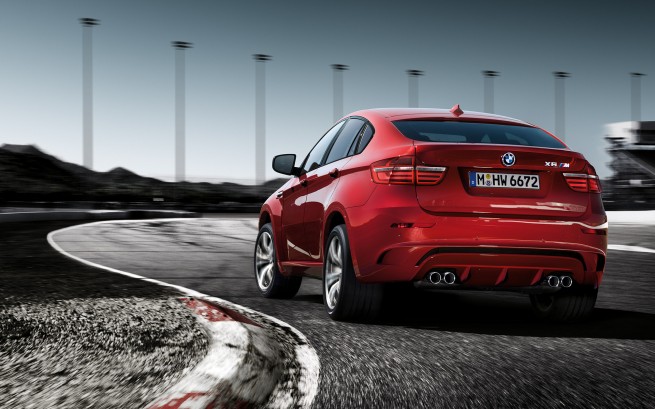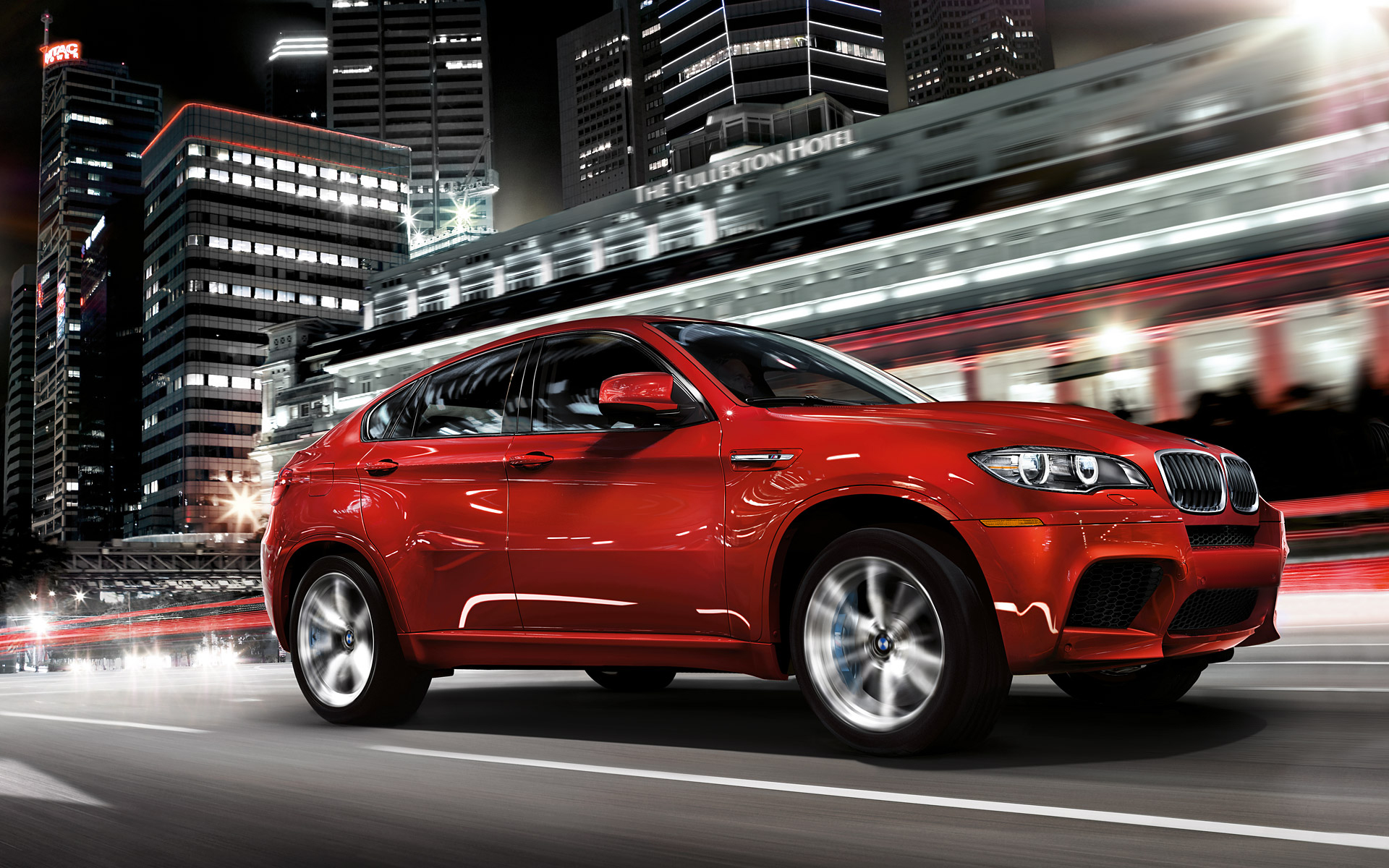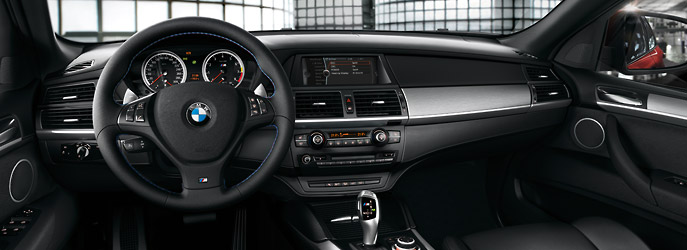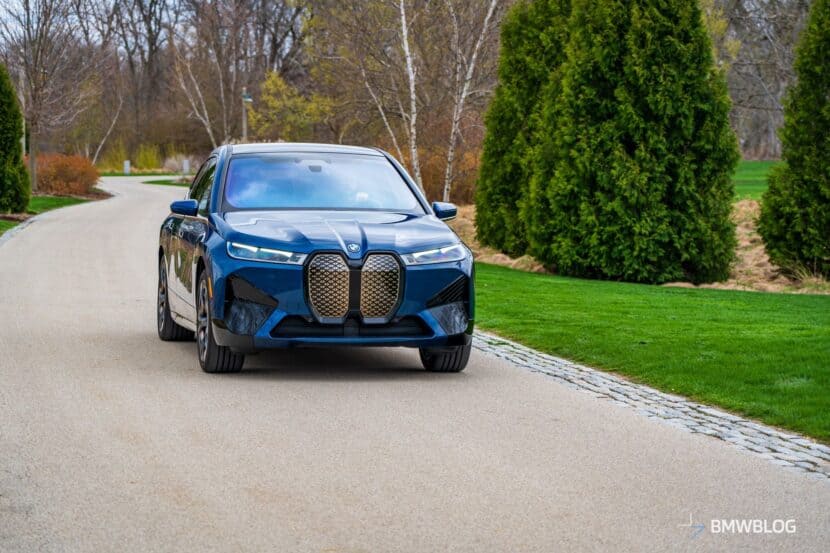This is the pinnacle of pure all wheel drive hooliganism. The BMW X6M versus Porsche Cayenne Turbo. Combined, these two bring an astounding 1055 hp and 1016 ft-lbs of torque to this heavy weight German comparo.
Since its introduction as a 2010 model, the BMW X6M looks have been polarizing. Why would you want a 5300 lbs Sport Ute that has less utility than an X5 and costs more? Good question. One could also question the need for a Porsche Cayenne Turbo as it costs more than twice the $48,850 starting price for Cayennes. Realistically, there is no rational reason to own either of these insane sport-utes. Accordingly, Top Gear Australia says people who drive these sort are Tossers.
German Engineering.
The Germans are on to something here though, because I didn’t care if people thought I was a tosser or not when I was driving them. The thrust capable from the Porsche and the BMW is an automotive junkie’s crack. I would slow down or wait for traffic to clear just to nail the throttle unleashing their turbocharged V8s which then channels power through all four wheels. It literally felt like they were clawing at the pavement when launching them from a dead stop. It’s an amazing feat what BMW and Porsche have done to make both of these SUV’s so rewarding to drive. Both also offer that classic SUV experience of a commanding view and seating position in gorgeous leather lined, tech infused cabins.
Starting with the BMW, one finds that all the chassis aides are included. These include Dynamic Performance Control (DPC) which is a trick differential that instead of braking the inside rear wheel in a hard turn adds power under throttle to the outside rear wheel. Fairly complex and impressive, given so many manufacturers choose to just use selective inside wheel braking to fake it. Next there’s EDC or Electronic Damper Control, Active Roll Stabilization and DSC (Dynamic Stability Control). Frankly there are just too many settings for me but thankfully the only thing you need to do is hit the M Button on the steering wheel to put it in Maximum M fun mode! Power is split 40% front, and 60% rear until the xDrive sense some slip, then the X6M can vary power distribution as needed to help grip and powering out of corners.
In its typical way Porsche serves from an ála carte menu, so most chassis aides are extra, until you get to the just released $146,000 Cayenne Turbo S. Porsche does one-up BMW with the Turbo’s height adjusting suspension system, which comes standard. This can vary the ground clearance from 6.2” up to 10.6”. The BMW’s height is not adjustable, though is 10mm lower than a standard X6. At the Cayenne Turbo level, Porsche’s Active Suspension Management (PASM) is included. On the Cayenne Turbo, I just don’t get why they make the Porsche Dynamic Chassis Control (PDCC) and Porsche Torque Vectoring (PTV) optional. PDCC is Porsche’s version of Active Roll Bar management and PTV is their version of BMW’s Active Differential (DPC). Porsche also has their alphabet soup of drivers aides PSM, ASR, ABD, EDTC. Enough acronyms between the two of these to give one a headache.
The Cayenne Turbo’s standard choice for wheels and tires is curiously 265/50/19 on a 19×8.5 square set up. Why one would suddenly choose to become rational at this point of purchasing a Cayenne Turbo with a taller side wall and less expensive all season tire just doesn’t fit. If you’re going to be a tosser, go all in and order the optional Porsche 21” 911 Turbo II wheels seen in the pictures of the black one with the low profile sidewalls and sticky summer rubber. BMW comes standard with some aggressive rubber shod on 20×10 wheels and 275/40/20 tires on the front with 20×11 wheels and 315/35/20 tires on the rear. That’s what I am talking about!
Technology and Gadgets.
The tech in the BMW X6M is outstanding. It starts with a well sorted and standard iDrive/NAV with a large 8.8” screen. Head-Up display is a must have option in the X6M with its wicked arching dynamic colored rev band and gear selection indicator being projected in your line of vision. When the driver is not wringing out the X6M, the Head-Up display is best in the business at showing you up coming navigation turns. BMW also has an optional camera system with top and side view to show you exactly what is surrounding the X6M when parking in tight spots because, well, um there’s very little rear visibility in the thing. Thankfully park sensors are standard. BMW Apps is an inexpensive and well worth it at just $250. For more info on BMW Apps click here.
Porsche’s tech in some respects exceeds BMW and in others falls short. Probably the coolest thing Porsche’s tech gurus have done is make the cluster on the right of the tachometer a configurable multifunction display in addition to their center mounted 7” display. You can make the multifunction display NAV, oil level, among other or even all four tire’s pressure to the PSI. Here Porsche provides the driver a live readout of tire pressure. I’ve even used the display to watch the PSI rise when I had to add a bit of air to the tires on the Porsche Cayenne Turbo. Where the Porsche falls short in my mind, is that overall PCM (Porsche Communications Management) is more cumbersome to use. It’s easy to get lost in its sea of buttons and knobs below center NAV touch screen.
The Cayenne does have a back up camera but not the slick top and side views that BMW has. Also, Porsche doesn’t have anything even close to BMW Apps either. Wait. Hold the phone, as of November 2012 production, Porsche started offering a $210 option that will add “Online Services” smartphone integration similar to BMW Apps. Both Germans can stream music via Bluetooth.
The Porsche Cayenne Turbo was completely redone for 2011. The interior has an ascending center console with a Panamera style cockpit. Typical Porsche there is nearly unlimited ability to customize it which BMW cannot match here in the United States, though can in Europe via BMW Individual. The Cayenne Turbo’s cabin is a very, very nice place to be. My only real gripe is that Porsche sells two different steering wheels with shifting controls that are completely opposite. I much prefer Porsche’s optional paddle shifter to their thumb button push/pull standard wheel even if you can’t have audio controls on paddle shifter version. Pull the right paddle on the paddle shifting wheel and you shift up. Pull the shifter on the thumb (dumb) version on the right and you shift down. It absolutely drives me nuts. Thankfully, Porsche will let you option either one, and if you didn’t spec your P car, you can buy one from the parts counter to switch to your liking.
Driving Experience.
Driving these two revealed their biggest difference. Though both are ridiculously fast for their size, the Cayenne Turbo does so in a more reserved manner. Almost like non-stop electric motor pulling it forward. The cabin is well isolated from road noise, perhaps too quiet. The X6M, on the other hand, was an outright raucous blast. Wicked burbling between shifts, almost like it was blipping the throttle between shifts on its 6-speed auto. Both have the ability to be driven sedately and do a good job at it. The BMW gives you more a sense of speed and feedback from the road with its hydraulic steering. It’s a physics defying experience to chuck the X6M into a corner and blast out of it.
There’s really nothing wrong with the way the Cayenne Turbo drives, it is just a bit reserved for what I see is such an outrageous machine. Maybe a good analogy is like the difference between a 911 Turbo and a 911 GT3, both great cars just different experiences. The Cayenne Turbo is a crazy fast machine but the experience is more isolated, less rough, you up get in a fight experience you can get from hammering an X6M. Road and Track noticed the same murky handling that I did, noting in February 2013, that the Cayenne Turbo is “still confusing, partly because you can approach a corner the same way twice and get wildly different results. The Cayenne also has a habit of jumping around under throttle. It’s not that the throttle itself is jumpy; the Cayenne’s whole back end hops around, seemingly indecisive as to which corner it should direct asphalt-melting quantities of torque.”
The other interesting thing I found was that Road and Track noted that the Cayenne actually weighed 5210 lbs, well over the MFR stated weight of 4785 lbs.
Smoking Tire X6M has an excellent track review at BMW North America’s Track in Spartanburg, SC Performance Delivery Center at the BMW Performance Driving School.
And here is our own Shawn Molnar sharing his track experience with the X6M:
Driving the X6M on track is a lot like riding a bull in a horse race. A turbocharged bull with advanced leg electronics and rear leg torque vectoring. The X6M is a heavy but highly capable track machine.
< A close friend of mine proudly owns an X6M and we’ve done many track days with it. I still recall my first time on track at the helm of this massive track-beast. My expectations were… um, conservative. Just consider its 5,254 lb curb weight. I was sure it would relentlessly understeer, and that its brakes would be baked within a few short laps.I was wrong on both counts. Through a very fast right hander at Toronto Motorsports Park (a TopGear-like track built upon an old WWII airfield) you can trailbrake the X6M in and get real yaw – the vehicle rotates nicely and requires just a kiss of counter steer – this at around 160 kph. More daunting are slow, tight corners, as these kinks often induce heavy understeer. Not so in the X6M, as the car (SUV?) is extremely well balanced and has massive front-end grip from its wide front tires. When you get back on the gas, the super-ute cleverly shifts torque side to side between the rear wheels, and throws power to the back to prevent understeer on the front axles via awd. For example, exiting a tight right hand corner, the advanced all-wheel drive system will push most of the torque through the left rear wheel – thus “pushing” the car out of the corner in the chosen direction. For what it’s worth, this technology was first pioneered in Formula 1 by Ferrari.
And what of those brakes? Well, they’re massive – and although they are not cross-drilled or slotted, they are internally vented and dissipate heat rather well thanks to the brake venting through the fascia and large surface area. After continuous, very hard lapping, the brakes hold up well with minimal fade noted. The engine feeds them plenty of work, hurling the massive track-star to speed with 550 hp and 500 lb-ft of thrust.
Perhaps most surprising is how flat the X6M keeps its body through corners. When you would expect roll (or if you were in a regular SUV: rollover) the X6M simply slides across the pavement in glorious 4 wheel drifts.
So it stops well, accelerates like a rabid bull, and corners with grip and surprisingly neutral handling. On nearly any racetrack it will keep up with most sports cars – and humiliate many of them. Trust me, sports car drivers don’t like to get passed by this thing, and if you’re handy behind the wheel – expect to see plenty of spins in front of you as drivers desperately try to stay in front – in vain.
BMW X6M negatives.
Well as far as the exterior goes, you either love it or you hate it. Personally I love it. Looking at resale values on X6s, I’d say a lot of others love it too. Moving onto the elephant in the room, this BMW has a weight problem. At 5324 lbs, it’s a hefty 539 lbs more than the Cayenne Turbo’s listed weight. Even as I write this tough, I am stunned at how the X6M handles its weight. The mass of the X6M and the higher horsepower motor absolutely punishes the mileage which is an EPA rate 12 city, 17 highway. The Cayenne Turbo manages a slightly better 15/22 MPG.
Edmunds Inside Line Test Footage of the Cayenne is here.
Porsche negatives.
Options can add $50,000 to the already steep base price of $108,750. The standard Cayenne Turbo wheels look rather Hondaish, so one must spec just shy of $4,000 to get the sweet 21” 911 II Turbo Wheels in the pictures below. Porsche Dynamic Chassis Control and Porsche Torque Vectoring are amazingly optional. For this crazy amount of power and base price, you need these to balance the chassis and control power delivery, in my opinion. The Tiptronic automatic transmission seems like it would not be as fast as a PDK that Porsche uses in every other car they make. I posed this “Tip vs PDK” in the Cayenne Turbo to Porsche for this article and they said that the “Tiptronic S is used in the Cayenne mainly for off-road and towing drive-ability. The throttle tip in point is smoother and more controllable with the torque converter, especially under loads.” Knew the Germans have a reason!
Should I buy the X6M or Cayenne Turbo?
I’d go with the X6M, it’s just the sort of hooligan I like, a more involving raw drivers Sport Ute. Man that seemed weird to type – a drivers sport ute, but that’s just what it is. If refined effortless speed is more your cup of tea, the Cayenne Turbo wont disappoint. In regards to whether or not owning one of these 500 hp+ SUV’s makes any sense, I pull one of my favorite quotes from a recent Road & Track for such things.
“Of course, no one needs dessert either. But it makes life better.”
Mfgr data | BMW X6M | Cayenne Turbo |
MSRP | $92,900 | $108,750 |
HP | 555 @ 6000 rpm | 500 @ 6000 rpm |
Redline | 7000 rpm | 6700 rpm |
Torque lb-ft | 500 1500-5650 rpm | 516 2250-4500 rpm |
0-60 Top Speed | 4.5 155 mph | 4.4 sec 172 mph |
Motor | 4.4L V8 | 4.8L V8 |
Weight lbs | 5324 | 4785 |
Transmission | 6 Speed Auto All-Wheel Drive | 8 Speed Auto All-Wheel Drive |
Suspension | Self Leveling Rear | Self-Leveling Height Adjustable |
Brakes | Front 4 Piston 15.6” Rear Single Piston 15.2” | Front 6 Piston 15.35” Rear 4 Piston 14.1” |
Standard Wheels/Tires | F 20×10 275/40/20 R20x11 315/35/20 | F 19×8.5 265/50/19 R 19×8.5/ 265/50/19 |
Dimensions | 192L” x 78.5”W x 66.3”H | 190.8L” x 76.3”W x 67”H |



























































































